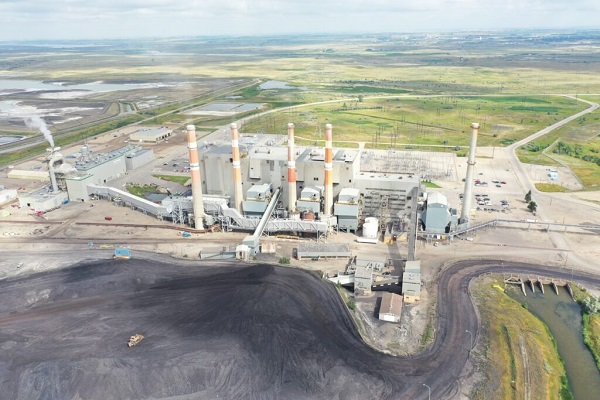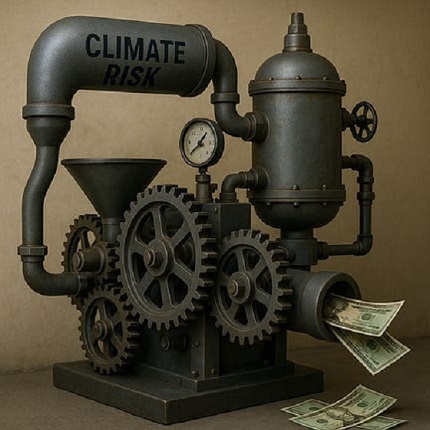Energy
A plan to save coal, power generation, and the oil industry in southeast Saskatchewan

From the Frontier Centre for Public Policy
Stop moving to shut down Saskatchewan coal – it could be the salvation of our oil industry
What if there was a way to keep coal mining jobs in Saskatchewan, continue to produce low-cost electrical power, and extend the production of a substantial portion of Saskatchewan’s oilfields not by decades, but by generations? And in doing so, we could still dramatically reduce carbon dioxide emissions, and maybe save some money by reducing our nuclear rollout?
All of this is now possible, and it has everything to do with keeping our coal miners digging and our coal-fired power plants going, maybe even renewing them.
There was a potentially major development for Saskatchewan’s energy sector buried in Whitecap Resources Inc.’s year-end financial report released on Feb. 21. Whitecap said about using CO2 for enhanced oil recovery, “We have also recently started CO2 injection at a pilot CO2 flood into the Frobisher formation underlying the Weyburn Midale unit. We drilled two (2.0 net) producer wells and three (3.0 net) injection wells in 2023 and initiated CO2 injection in late 2023. Early results are encouraging with a notable production response coming through approximately one month after injection, increasing oil rates on the two producer wells from approximately 40 bpd to over 200 bpd, per well. Further technical analysis to determine commerciality and large-scale development is ongoing, and we will provide updates as next steps are determined.”
While the Bakken formation got all the headlines starting around 2007, the reality is in southeast Saskatchewan, very few Bakken wells are drilled these days. Most of the activity has been Frobisher wells, especially around Steelman, where it has been targeted for decades. So if the Frobisher responds well to tertiary recovery through carbon dioxide floods, it opens up a lot of possibilities for extending the life of some of Saskatchewan’s most prolific oilfields, taking recovery rates from the mid-20 per cent range to over 50 per cent.
Back in 2012, Canadian Natural Resources Limited president and CEO Steve Laut expressed interest in using CO2 for enhanced oil recovery in the Steelman Unit.
Whitecap’s initial results were not a five per cent improvement, or 50 per cent, but five times higher. That’s something everyone, including the provincial government, should take notice of. Imagine if you could increase crop production from 60 bushels to the acre to 300 bushels? Or quintuple potash or uranium production from certain mines? You’d be an idiot to not at least take a hard look at it.
I’m not suggesting it will remain anywhere close to that level, but the fact the CO2 flood in the Weyburn Unit, in the Vuggy and Marly units of the Midale formation, has already dramatically increased recovery rates and lengthened the lifespan of a field that otherwise would have long gone dry is significant. If the same process can be expanded to the much more prolific Frobisher formation, that’s a very big deal.
Even if it was a 25 per cent improvement – that’s well worth investigating.
Frobisher is a big deal
How prolific is the Frobisher?

Most of the drilling activity in southeast Saskatchewan follows a certain pattern. The majority is along the Frobisher subcrop – the edge of the formation where it pinches out, forming a structural trap. Of the 16 rigs working in Saskatchewan on March 3, it’s a good bet 10, and possibly more, were drilling Frobisher wells. The daily well report for March 3 published by the Ministry of Energy and Resources shows out of 19 wells listed that day in Estevan area of responsibility, all 19, across five oil producers, were either targeting the Frobisher. It may be a fluke all that day showed the Frobisher, but it definitely shows its significance.
So if Whitecap, which has been growing to be one of Saskatchewan’s largest oil producers, has found a way to substantially increase production from this formation, shouldn’t we take a hard look at how we can take advantage of it?
Stop the process of winding down coal
There’s one thing we should do right now – stop this idea of shutting down our coal-fired power plants near Estevan. You hardly hear SaskPower mention coal-fired power anymore. I keep hearing how those plants are getting enough maintenance to just get them to the planned phase out of 2030, but not likely a day beyond that. The way things are going, they’ll likely limp to the finish line, but not an inch past that. Similar things are said to me about the mines and their iron.
I’m suggesting we should strongly reconsider that. Pour some money into keeping both the power plants and the mines viable should we choose to extend their lives beyond 2030.
The Government of Saskatchewan and SaskPower should have some real serious discussions with Whitecap, and possibly other oil companies like CNRL, about the possibility of dramatically increasing carbon capture and producing as much CO2 as we can. That means putting carbon capture on Shand Power Station. But it could also mean either refurbishing Boundary Dam Unit 6 or, shockingly, building Shand Unit 2, and maybe even Unit 3, with High Efficiency Low Emissions (HELE) technology, designed from the ground up with carbon capture running from Day 1.
One might say that’s going to cost billions, and you’d be right. But I dare say doing so will cost less than just one 300 megawatt small modular reactor, whose price is not yet known, but previous SaskPower Minister Don Morgan said could run between $3 and $5 billion.
It’s going to take a long time to squeeze the first megawatt out of that first reactor. If everything goes to plan (and it never, ever goes to plan with nuclear), we might see the first SMR megawatt around 2034-35. Putting CCS on our existing coal fleet, and maybe, dare I say, expanding it, with HELE and CCS, could help bridge the gap in the interim until we get several SMRs up and running, and have become proficient in their operation. That’s baseload power that won’t go to zero like wind does every so often, and solar does every night.
Doing so would keep the Estevan economy rolling, not just from coal mining and power generation, but also oil production.
I’ve been writing about the Saskatchewan oil industry for almost 16 years now, and I am increasingly alarmed by the fact I haven’t seen the “next big thing,” in southern Saskatchewan. Drilling numbers keep on their slow decline. Companies like Crescent Point have largely lost interest and are pouring their capital expenditure money into exciting Alberta plays. That may be great for Alberta, but Saskatchewan needs to do something to keep things going here. That we’ve kept oil production relatively flat for the last 23 years is a small miracle. But if we don’t get a lot more new investment, it won’t stay that way.
The Sask Party provincial government a few years ago set a bold goal of increasing oil production from the current 454,000 barrels per day to 600,000 barrels by 2030. I asked Premier Moe about that in my year end interview with him last December. He said he thought it was a modest goal.
But as I pointed out to him, and Energy and Resources Minister Jim Reiter, I’m not seeing evidence of the province moving to make that happen.
This is something the Government of Saskatchewan, through its Crown corporation SaskPower, can do. If we tell the feds to stick it when it comes to shutting down coal by 2030, if we put carbon capture on existing units and even build new coal units with carbon capture, then supply that CO2 to companies like Whitecap, and maybe others like Canadian Natural Resources Limited, we could extend the life of our most prolific play in southeast Saskatchewan. We might even increase its production while we’re at it. All the while, we’d be ensuring baseload power production.
This plan’s impact would be measured in generations, not an election cycle, or a corporate quarter.
And it might also save us some money by reducing our nuclear expenditure.
But action has to be taken now. Because if we let those power plants and mines slide past the point of no return, an opportunity may be lost that we will be kicking ourselves for later.
We can’t let that happen.
Brian Zinchuk is editor and owner of PipelineOnline.ca, and occasional contributor to the Frontier Centre for Public Policy. He can be reached at [email protected].
Business
Inflation Reduction Act, Green New Deal Causing America’s Energy Crisis


From the Daily Caller News Foundation
By Greg Blackie
Our country is facing an energy crisis. No, not because of new demand from data centers or AI. Instead, it’s because utilities in nearly every state, due to government imposed “renewable” mandates, self-imposed mandates, and the supercharging of the Green New Scam under the so-called “Inflation Reduction Act,” have been shutting down vital coal resources and building out almost exclusively intermittent and costly resources like solar, wind, and battery storage.
President Donald Trump understands this, and that is why on day one of his administration he declared an Energy Emergency. Then, a few months later, the President signed a trio of Executive Orders designed to keep our “beautiful, clean coal” burning and providing the reliable, baseload, and affordable electricity Americans have benefitted from for generations.
Those orders have been used to keep coal generation online that was slated to shut down in Michigan and will potentially keep two units operating that were scheduled to shut down in Colorado this December. In Arizona, however, the Cholla Power Plant in Navajo County was shuttered by the utility just weeks after Trump explicitly called out the plant for saving in a press conference.
Dear Readers:
As a nonprofit, we are dependent on the generosity of our readers.
Please consider making a small donation of any amount here.
Thank you!
Unlike states with green mandates, Arizona essentially has none. Instead, our utilities, like many around the country, have self-imposed commitments to go “Net Zero” by 2050. To meet that target, they have planned to shut down all coal generation in the state by 2032 and plan to build out almost exclusively solar, wind, and battery storage to meet an expected explosive growth in demand, at a cost of tens of billions of dollars. So it is no surprise that like much of the rest of the country, Arizona is facing an energy crisis.
Taking a look at our largest regulated utilities (APS, TEP, and UNS) and the largest nonprofit utility, SRP, future plans paint an alarming picture. Combined, over the next 15 years, these utilities expect to see demand increase from 19,200 MW to 28,000 MW. For reference, 1,000 MW of electricity is enough to power roughly 250,000 homes. To meet that growth in demand, however, Arizonans will only get a net increase of 989 MW of reliable generation (coal, natural gas, and nuclear) compared to 22,543 MW (or nearly 23 times as much) of intermittent solar, wind, and battery storage.
But what about all of the new natural gas coming into the state? The vast majority of it will be eaten up just to replace existing coal resources, not to bring additional affordable energy to the grid. For example, the SRP board recently voted to approve the conversion of their Springerville coal plant to natural gas by 2030, which follows an earlier vote to convert another of their coal plants, Coronado, to natural gas by 2029. This coal conversion trap leaves ratepayers with the same amount of energy as before, eating up new natural gas capacity, without the benefit of more electricity.
So, while the Arizona utilities plan to collectively build an additional 4,538 MW of natural gas capacity over the next 15 years, at the same time they will be removing -3,549 MW (all of what is left on the grid today) of coal. And there are no plans for more nuclear capacity anytime soon. Instead, to meet their voluntary climate commitments, utilities plan to saddle ratepayers with the cost and resultant blackouts of the green new scam.
It’s no surprise then that Arizona’s largest regulated utilities, APS and TEP, are seeking double digit rate hikes next year. It’s not just Arizona. Excel customers in Colorado (with a 100% clean energy commitment) and in Minnesota (also with a 100% clean energy commitment) are facing nearly double-digit rate hikes. The day before Thanksgiving, PPL customers in Rhode Island (with a state mandate of 100% renewable by 2033) found out they may see rate hikes next year. Dominion (who has a Net Zero by 2050 commitment) wanted to raise rates for customers in Virginia by 15%. Just last month, regulators approved a 9% increase. Importantly, these rate increases are to recover costs for expenses incurred years ago, meaning they are clearly to cover the costs of the energy “transition” supercharged under the Biden administration, not from increased demand from data centers and AI.
It’s the same story around the country. Electricity rates are rising. Reliability is crumbling. We know the cause. For generations, we’ve been able to provide reliable energy at an affordable cost. The only variable that has changed has been what we are choosing to build. Then, it was reliable, dispatchable power. Now, it is intermittent sources that we know cost more, and that we know cause blackouts, all to meet absurd goals of going 100% renewable – something that no utility, state, or country has been able to achieve. And we know the result when they try.
This crisis can be avoided. Trump has laid out the plan to unleash American Energy. Now, it’s time for utilities to drop their costly green new scam commitments and go back to building reliable and affordable power that generations to come will benefit from.
Greg Blackie, Deputy Director of Policy at the Arizona Free Enterprise Club. Greg graduated summa cum laude from Arizona State University with a B.S. in Political Science in 2019. He served as a policy intern with the Republican caucus at the Arizona House of Representatives and covered Arizona political campaigns for America Rising during the 2020 election cycle.
Automotive
Politicians should be honest about environmental pros and cons of electric vehicles

From the Fraser Institute
By Annika Segelhorst and Elmira Aliakbari
According to Steven Guilbeault, former environment minister under Justin Trudeau and former member of Prime Minister Carney’s cabinet, “Switching to an electric vehicle is one of the most impactful things Canadians can do to help fight climate change.”
And the Carney government has only paused Trudeau’s electric vehicle (EV) sales mandate to conduct a “review” of the policy, despite industry pressure to scrap the policy altogether.
So clearly, according to policymakers in Ottawa, EVs are essentially “zero emission” and thus good for environment.
But is that true?
Clearly, EVs have some environmental advantages over traditional gasoline-powered vehicles. Unlike cars with engines that directly burn fossil fuels, EVs do not produce tailpipe emissions of pollutants such as nitrogen dioxide and carbon monoxide, and do not release greenhouse gases (GHGs) such as carbon dioxide. These benefits are real. But when you consider the entire lifecycle of an EV, the picture becomes much more complicated.
Unlike traditional gasoline-powered vehicles, battery-powered EVs and plug-in hybrids generate most of their GHG emissions before the vehicles roll off the assembly line. Compared with conventional gas-powered cars, EVs typically require more fossil fuel energy to manufacture, largely because to produce EVs batteries, producers require a variety of mined materials including cobalt, graphite, lithium, manganese and nickel, which all take lots of energy to extract and process. Once these raw materials are mined, processed and transported across often vast distances to manufacturing sites, they must be assembled into battery packs. Consequently, the manufacturing process of an EV—from the initial mining of materials to final assembly—produces twice the quantity of GHGs (on average) as the manufacturing process for a comparable gas-powered car.
Once an EV is on the road, its carbon footprint depends on how the electricity used to charge its battery is generated. According to a report from the Canada Energy Regulator (the federal agency responsible for overseeing oil, gas and electric utilities), in British Columbia, Manitoba, Quebec and Ontario, electricity is largely produced from low- or even zero-carbon sources such as hydro, so EVs in these provinces have a low level of “indirect” emissions.
However, in other provinces—particularly Alberta, Saskatchewan and Nova Scotia—electricity generation is more heavily reliant on fossil fuels such as coal and natural gas, so EVs produce much higher indirect emissions. And according to research from the University of Toronto, in coal-dependent U.S. states such as West Virginia, an EV can emit about 6 per cent more GHG emissions over its entire lifetime—from initial mining, manufacturing and charging to eventual disposal—than a gas-powered vehicle of the same size. This means that in regions with especially coal-dependent energy grids, EVs could impose more climate costs than benefits. Put simply, for an EV to help meaningfully reduce emissions while on the road, its electricity must come from low-carbon electricity sources—something that does not happen in certain areas of Canada and the United States.
Finally, even after an EV is off the road, it continues to produce emissions, mainly because of the battery. EV batteries contain components that are energy-intensive to extract but also notoriously challenging to recycle. While EV battery recycling technologies are still emerging, approximately 5 per cent of lithium-ion batteries, which are commonly used in EVs, are actually recycled worldwide. This means that most new EVs feature batteries with no recycled components—further weakening the environmental benefit of EVs.
So what’s the final analysis? The technology continues to evolve and therefore the calculations will continue to change. But right now, while electric vehicles clearly help reduce tailpipe emissions, they’re not necessarily “zero emission” vehicles. And after you consider the full lifecycle—manufacturing, charging, scrapping—a more accurate picture of their environmental impact comes into view.
-

 Alberta2 days ago
Alberta2 days agoThe Recall Trap: 21 Alberta MLA’s face recall petitions
-

 International2 days ago
International2 days agoTyler Robinson shows no remorse in first court appearance for Kirk assassination
-

 Daily Caller1 day ago
Daily Caller1 day ago‘There Will Be Very Serious Retaliation’: Two American Servicemen, Interpreter Killed In Syrian Attack
-

 illegal immigration2 days ago
illegal immigration2 days agoUS Notes 2.5 million illegals out and counting
-

 Business24 hours ago
Business24 hours agoInflation Reduction Act, Green New Deal Causing America’s Energy Crisis
-

 Automotive1 day ago
Automotive1 day agoPoliticians should be honest about environmental pros and cons of electric vehicles
-

 Crime17 hours ago
Crime17 hours agoTerror in Australia: 12 killed after gunmen open fire on Hanukkah celebration
-

 Media16 hours ago
Media16 hours agoReporters determined to drive their industry and its reputation into the abyss one Tweet at a time











